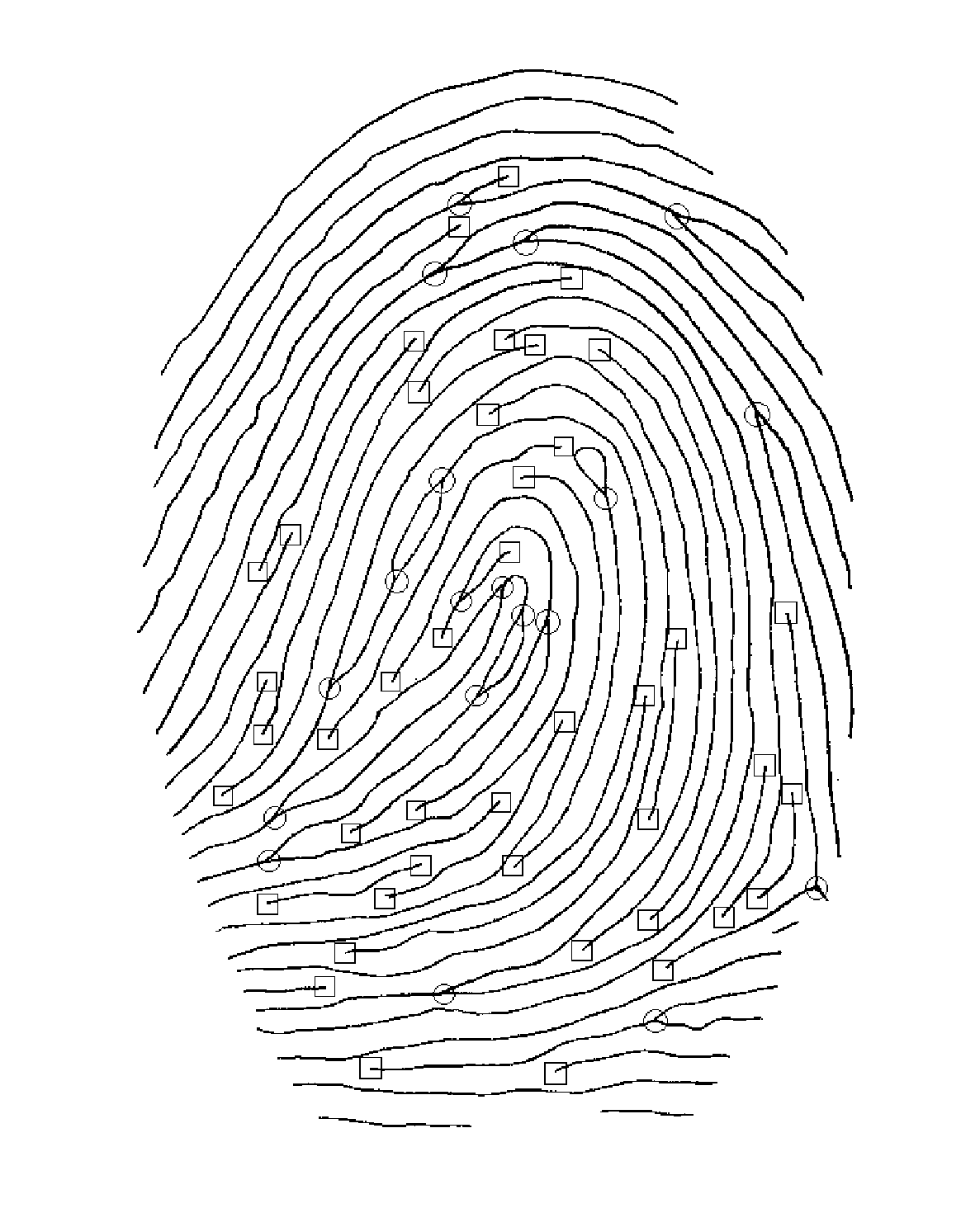Fingerprint enrolment algorithm
a fingerprint and fingerprint technology, applied in the field of minutia-based fingerprint analysis, can solve the problem of not giving sufficient detail to confirm a match between two fingerprints, and achieve the effect of reducing the accuracy of fingerprint matching, limiting the desirability of fingerprint-based devices, and adding additional time and/or costs
- Summary
- Abstract
- Description
- Claims
- Application Information
AI Technical Summary
Benefits of technology
Problems solved by technology
Method used
Image
Examples
Embodiment Construction
[0072]The following preferred embodiments of the invention relate particularly to fingerprints. The term fingerprint is intended to mean a print (a graphic representation of ridges and valleys) of a finger (including the thumb). However, it will be understood that the method is not limited to fingerprints, but is applicable to any print that can be represented by a set of minutiae points. Such prints include, for example, prints from fingers, palms, toes and soles.
[0073]FIGS. 4A and 4B show partially cut-away views of an electronic card 2 including a fingerprint swipe sensor 8. The following preferred embodiments will be described with reference to the electronic card 2. The fingerprint sensor 8 can be incorporated into any suitable smart card as a biometric sensor for additional security. The electronic card 2 shown in FIGS. 4A and 4B is not to scale and certain features have been emphasised. Particularly, the thicknesses of the card body 4 and of the circuit 6 have been enlarged s...
PUM
 Login to View More
Login to View More Abstract
Description
Claims
Application Information
 Login to View More
Login to View More - R&D
- Intellectual Property
- Life Sciences
- Materials
- Tech Scout
- Unparalleled Data Quality
- Higher Quality Content
- 60% Fewer Hallucinations
Browse by: Latest US Patents, China's latest patents, Technical Efficacy Thesaurus, Application Domain, Technology Topic, Popular Technical Reports.
© 2025 PatSnap. All rights reserved.Legal|Privacy policy|Modern Slavery Act Transparency Statement|Sitemap|About US| Contact US: help@patsnap.com



